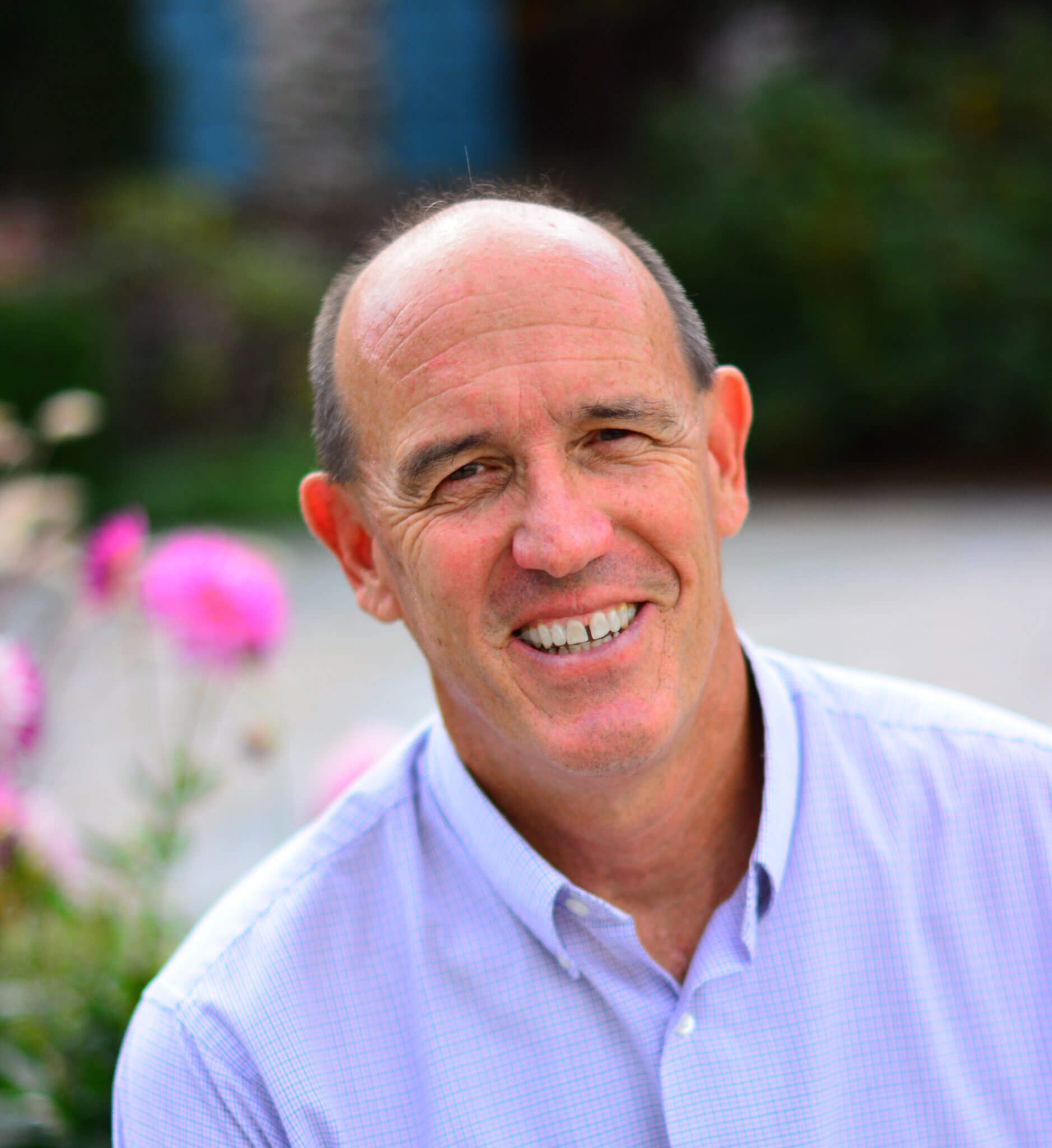We have to permanently re-draw responsibilities and decision-making processes to empower those who lean into generating creative solutions to disruptive challenges.
Grant Lichtman, Author and Education Consultant
Many educators feel, rightly so, that we are not “winning” right now. And, it’s only getting tougher as winter draws near. More schools are closing (again), expectations and conditions are constantly changing (again), and concerns for the health and well-being of our own families and our students’ families are at an all-time high. To put it simply, the pandemic is going to get worse before it gets better.
But, there is reason to believe that we are beginning to see the light at the end of the tunnel. Stage three clinical trials for two COVID-19 vaccines show promising effectiveness, and we can realistically believe they will become fairly accessible sometime in the spring (potentially sooner for front-line workers and the most-vulnerable populations).
The arrival of the winter holidays signals that spring is right around the corner. How are we planning for it? How can we manage through the daily trials and traumas today, while putting ourselves in a “winning” position in a few months? Let’s take a page from our history books to guide us.
In February 1943, poorly trained and untested units of the American Army were soundly defeated by German and Italian forces in the Battle of Kasserine Pass in North Africa. Allied forces were pushed back more than 50 miles, suffering grisly casualties. It was a ghastly and bloody introduction to the Afro-European war theater for American soldiers. How could they summon the courage to continue?
First, the U.S. Army quickly learned from that disaster and in the days and weeks that followed, made critical strategic, tactical, and leadership changes. Second, General Eisenhower marshaled his leadership team and began planning for an invasion of Sicily, even though all eyes were on North Africa at the moment. Eisenhower did not know exactly how or when the North Africa campaign would end, but he knew it would end, and the leaders under his command needed to plan for what would come after.
Good leaders anticipate future challenges even as they are fighting today’s battles. Now is the time to “get ready to get ready” for the next iteration of “school” as we emerge from this crisis. This pandemic will end, and it will cause permanent changes to our way of life, including how we “do school.”
Recognizing that many leaders might feel stuck, I wanted to offer three starting points that can serve as the blueprint for your recovery plan.
1. Identify Opportunities from Lessons Learned
- Our students and teachers interact effectively in a number of ways that do not involve a teacher standing in the front of the room. We have known this for a long time, but now many more teachers and students see the benefits of shifting to a pedagogy that is student-centered, inquiry-based, and focused on personalized learning experiences.
- Our teachers value and need each other as co-designers, collaborators, and sharers of knowledge and practice. This is an opportunity to completely reimagine worn-out formats of the traditional Professional Learning Community (PLC) or Professional Learning Networks (PLN). We are readier than ever to shatter the silos that separate teachers by grade level, subject, and campus. Our teams are ready to embrace the interactive, cross-institutional, community-based sharing that has always been a chief hallmark of innovation. And, remember: our students model their teachers. This kind of collaboration and co-design amongst the adults is what many forward-leaning teachers are trying to foster in their students.
- Top-down decision making should have been laid to rest, permanently, by this crisis and our response. Inclusive, distributed, risk-tolerant leadership across all levels of the school community are essential to maintain the flexible, nimble responses that are needed to navigate a rapidly changing world. Our best teachers led at the front last spring; we will keep empowering them to lead as the pandemic loosens its control.
- Innovation comes from exploring the edges and overlaps of our comfort zones. The last seven months have been a hot mess, but this period has also been a cauldron of creativity. We should examine and let our next steps be strongly informed by what worked well, even if those things run contrary to what worked in a pre-pandemic world. Our teachers, students, and parents have had a crash course in Innovation 101. Let’s build on that.
- Inertia and the fear of change are not inevitable obstacles. We proved that last spring when many schools turned on a dime. We now know we can adapt, and the next iteration, whatever it encompasses for your school or district, will be a walk in the park compared to what we have been through this year. Don’t let us waste the key lesson of this crisis: We can move forward with almost any challenge if we work together.
2. Consider Foundational Blocks for Rebuilding
- Do what is best for the physical and emotional health of your students, teachers, and families. Student and adult health are often secondary to crushing homework loads, pressure to get through curricula, and over-prioritization of testing. Add onto these misaligned priorities with inequities in access to technology and other learning resources, and we don’t have to wonder why so many students and adults are distressed. The answer is right there in front of us. Distressed people do not teach or learn well, nor do they make good choices. While educators can’t be nurses and doctors, and schools are not health clinics, we can do much more to deeply embed well-being into our goals and culture.
- Embrace flexibility. I have repeatedly heard that word, “flexibility,” as the critical ingredient for success as educators from a wide range of schools debriefed the last seven months. We simply have to build on this. We know that the best organizations deal with changing conditions by being nimble and dynamic, not static. Baking this into school cultures is our most powerful building block for whatever future awaits.
- Failure is inevitable. Accept it. Many school leaders and teachers spent the summer of 2020 planning for the fall, only to witness many of those plans fall apart within days or weeks of the start of the new school year. Remember, even the best laid plans often fail when conditions are highly volatile. We ask our students to take risks and learn from their failures. We should do the same. Great schools are wearing their attempts and re-starts as a badge of courage, not of disappointment.
- Make choices, even if they might be wrong. When facing new, rapidly-evolving challenges, it is almost always worse to stand still than to do something. Stasis rarely wins in the arc of evolution. Don’t expect the world to reset to 2019. Expect and anticipate change so that when it comes, the shock will be muted.
Embrace and Navigate Likely Failure Points
- For decades, education has largely ignored the rate at which a rapidly changing world has shaped the environment within and beyond schools’ walls. With the spread of COVID-19, we now have a shared experience in just how dramatic “exponential” change can be. We have to readjust our frame of reference and timelines for making changes to school that better reflect the challenges our students, teachers, and families face now and in the future.
- Innovation in schools has largely stagnated relative to the rest of the world because deviating from what we know is just too uncomfortable. There is a dangerous likelihood that many schools will default back to their pre-pandemic comfort zones because stakeholders are worn out by discomfort. Making this decision would compound the negative consequences of the pandemic without gaining from any of the positive lessons learned.
- Most school systems fail to incentivize, support, and reward bold, forward-looking leaders. We learned last spring that these very leaders are the ones who were first to test, adopt, and share what worked and what did not—accelerating the transition to virtual and hybrid learning for the rest. We have to permanently re-draw responsibilities and decision-making processes to empower those who lean into generating creative solutions to disruptive challenges.
- There isn’t and never has been one great answer. Every conceivable format of education is taking place somewhere this fall, along with a good number that we probably would have said were beyond conception a year ago. Those who have sought or preached a one-size-fits-all cookbook for how schools should be organized in the future were never right, and school leaders can stop looking for that Holy Grail. Creating the right school for your community takes more work, but in the end, it will be vastly more successful and sustainable.
Is your school community equipped to begin building a strategic post-pandemic plan? Do your faculty have the skills, or even the bandwidth, to gaze beyond the pressures of tomorrow? Those are two good questions to start with.
Getting that Control Back
At a recent virtual workshop a school leader shared the profound observation that, “Our faculty feel like they are being bullied, and COVID-19 is the bully that takes control of our lives; that is what bullies do. What our people want most is to get that control back.” Nothing could be more true.
We know that before the pandemic, at many schools, many stakeholders were eager to transform our schools. They had great ideas and passion for a learning experience that is more relevant and responsive to the times and challenges we all face. They were thinking about both “today and tomorrow,” as well as the long-term challenges of education.
We need to create the conditions where re-taking ownership in that desire for transformation is manageable as we navigate this difficult winter and launch into spring. Empowered leaders will rise to the occasion and relish the opportunity to be more strategic about designing a better future for their school, as we enter the post-COVID world.

